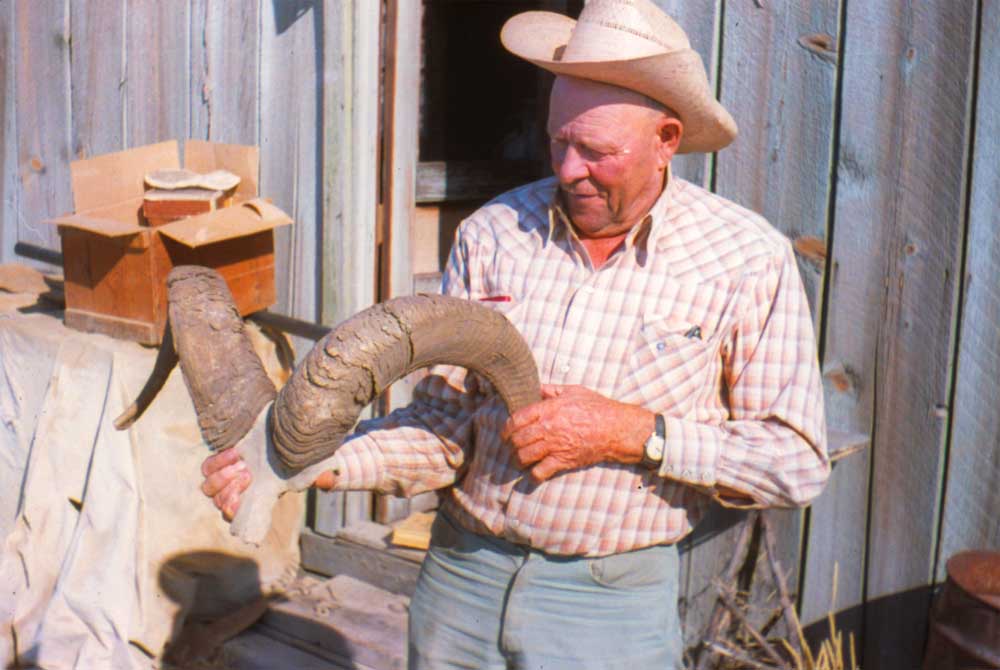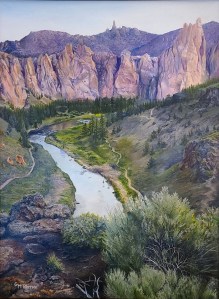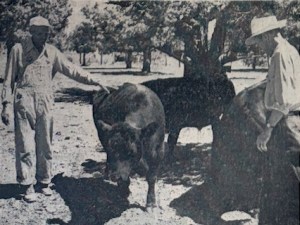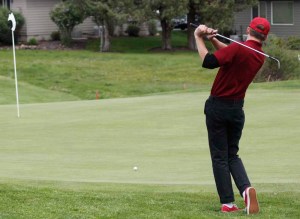Offbeat Oregon: The sage of Fort Rock
Published 4:00 am Thursday, June 20, 2024

- Reub Long holding a partial bighorn sheep skull outside a shed at Fort Rock Cave in 1966. Reub said he titled this photo “one horny old goat contemplating another.”
The tiny town of Fort Rock is famous for two things: The 14,000-year-old sandals found in a cave nearby and Reub Long.
Trending
It’s been a while — nearly 50 years — since Reub died in the summer of 1974 at the age of 76. But even today, among old Oregon wits and raconteurs and cowboy poets, Reub plays number-two to nobody.
“I don’t lie to people, exactly,” he wrote in the book “The Oregon Desert.” “But it’s fun to baffle them.”
In that, he was hardly unique. Frontier Oregon was full of tall-tale tellers.
Trending
“We always applied the rule that a foolish question rated a foolish answer,” recalls Ivan Woolley, who in his youth drove a passenger stage on the rough and primitive Mount Hood Toll Road. But Ivan would be quick to admit that nobody else quite had the storytelling chops of Reub Long. They called him “The Sage of Fort Rock.”
Last century man
Like Humphrey Bogart, Reub Long was a “last century man” — a child of the 19th century, born in 1898 in Lakeview. Also like Bogart, he knew and worked with lots of movie-industry people and Hollywood stars — but, more on that later.
When Reub was just two years old, his parents bought a big meadow in the Christmas Lake area. The family moved onto it and built a cabin there.
“The nearest doctor was (Dr. Bernard Daly) at Lakeview, and it was 18 miles to the nearest neighbor,” Reub recalls. “I grew up with the coyotes and jackrabbits. Some people said I was so wild I only came in for water after dark.”
Back in those days, the dry side of Oregon was a very different place. Dry-siders today still refer to it as cowboy country, but it’s not like it was back then. When Reub was a wee lad, virtually every man in the county was in the livestock industry, whether cattle or sheep or horses. If you weren’t a cowboy or a sheepman, you were either a merchant or a visitor.
It’s not like that today.
Today Oregon’s outback is alfalfa country. If you pull it up on Google Maps, you’ll see it’s peppered with perfect circles of green that stand out against a background of beige. Those are irrigated alfalfa fields, made possible by the discovery of a huge aquifer under much of the basin, and the arrival of electric service to cCentral Oregon in the mid-1950s to run the pumps.
But in early “nineteen-oughts,” Alfalfa fields were far in the future. Reub grew up surrounded by cowboys, looking up to them, trying to keep up with them. He bought his first saddle when he was 7 years old, with money earned from coyote bounties and livestock trades. He used it to ride to school every day in Silver Lake, 11 miles away.
Getting schooled
By the time Reub was starting school, the High Desert had already started to change — but not to alfalfa. The change came from homesteaders moving onto the range and fencing it off, disrupting the open rangeland that flocks of sheep and herds of cattle had the run of before.
In Reub’s youth, outback Oregon was about the last place in the lower 48 where a person could still file a homestead claim. The rush started in 1905 and ended more or less with the entry of the U.S. into World War I in 1917. Tempted by the promise of level, “fertile” land in 320-acre slices and plied with misleading pictures of pastoral paradises, young families across the country flocked to Lake County and its surrounding lands.
“With the wave of homesteaders, each week showed new shacks sprouting up in the sand,” Reub wrote. “There was a lot of visiting, welcoming the newcomers. The folks would get together and compare notes. Each wanted to believe he had made a good location and wanted people to like them.”
Most of them brought some startup capital, so that they could build a cabin and maybe a barn. They also needed livestock and sometimes the services of a hired hand. So Reub, who from the start was a real hustler in the “good” sense of the word, never lacked for work opportunities. He also was already one of the best horse handlers in the country and his services were always in demand. He found himself too busy to bother finishing high school.
Reub was one of those rare characters blessed with a gift both for earning money and for hanging onto it. Later in his life he used to say, “nothing gets a man into such hot water so quickly as good credit. Be careful not to acquire too much of it. It has ruined more people than bad credit ever did.”
Anyone who’s ever looked up the monthly interest payment on a large credit-card balance (or, getting closer to home here, taken out a Small Business Administration loan to try to prop up a failing business that he has foolishly bought thinking he could turn it around) probably knows what Reub is talking about!
In any case, when the homesteaders ran out of money — as they inevitably did unless they were lucky enough to have an on-site source of water — Reub was one of the few folks around with enough money to buy them out. So after a while, one half-section at a time, he accumulated a several-thousand-acre spread, peppered with abandoned homesteaders’ shacks, some of which he’d probably helped build.
“The homesteaders were beaten one by one,” Reub recalls. “Those who arrived with the least stayed the longest. The ones who came with money usually came without experience and hired the others. The result was that the well-to-do who came with money and no experience left with experience and no money.”
“The homesteaders had no chance,” he added, a few pages later in his book. “A homestead is supposed to be farmland — but the desert isn’t farmland. Rainfall can drop to as low as five inches in a year, which won’t raise any known crops. So they were poor, deluded persons. But they were not beaten, bitter, or downtrodden. Against all reason they were happy. I have met dozens of them since — in all walks of life, and to a man, they remember their homestead days as the happiest time of their life.”
Making it where others couldn’t
So how did Reub Long and his family manage to thrive in Central Oregon when so many homesteaders didn’t? A couple things. First, their home base — the meadow that Reub’s father paid money for before the homesteading boom broke out — had at least one reliable water source on it.
And secondly, Reub knew how to hustle. He was, in the idiom of the day, “wide awake” at all times. He was friendly and outgoing, a super hard worker, and a gifted stock handler.
“My business, most of my life, was with horses, and there are all kinds of horse businesses,” he recalled. “I tried all of them except racing. In addition, I tried sheepherding, trapping, dairying, dryland farming, surveying, dude wrangling, moving-picture making, working for the government, and running a pool hall. Once, in a pinch, I even trained and promoted a prizefighter.”
In the late 1950s and 1960s, Reub regularly led “dude ranch” experiences, in which city folks would pay him to squire them around like real cowboys. This line of activity brought him to the attention of some of the Hollywood movie studios, who started hiring him to scout locations and furnish horses, wagons, and other Wild West props for movies. Reub helped with Canyon Passage (1946), The Indian Fighter (1955), and The Way West (1967). Along the way, he got to know Andy Devine, Susan Hayward, Kirk Douglas, Dana Andrews, Lloyd Bridges and a number of other slightly-less-famous actors.
He also was responsible, as much as any other single person, for the transformation of Oregon’s Outback from cattle-and-sheep rangeland into alfalfa country.
As an adviser on a Bureau of Land Management board, he lobbied the Bonneville Power Administration and Federal Department of Rural Electrification to bring electrical-grid connections to northern Lake County. This happened in 1955, and the first irrigated alfalfa field followed not long after.
And it was Reub who in 1938 invited legendary University of Oregon archaeologist Luther Cressman to explore a cave on his property for evidence of ancient people. After Cressman found 14,000-year-old sandals there, Reub donated the property along with Fort Rock itself (the extinct volcano, not the town) to the state.
Such an eclectic life naturally provided Reub with plenty of anecdotes to pass on and “augment” as well as great opportunities to hone his storytelling style with various different kinds of audiences. And in his later years, after he’d more or less settled down at his home on the ranch and started collaborating with Oregon State University Extension Agent Russ Jackman on “The Oregon Desert,” he settled into what for him probably counted as semi-retirement, with a new profession as the Sage of Fort Rock.
There are dozens of Reub Long stories circulating out there in the world. In the second part of this series, we’ll take a look at some of the most memorable of these.
“The Oregon Desert,” a book by R.A. Long and E.R. Jackman published in 1964 by Caxton; Long, R.A. et al.
“The Well-Traveled Casket,” a book by Tom Nash published in 1992 by the U. of Utah Press
“Mt. Hood or Bust: The Old Road,” an article by Ivan M. Woolley published in the March 1959 issue of Oregon Historical Quarterly








